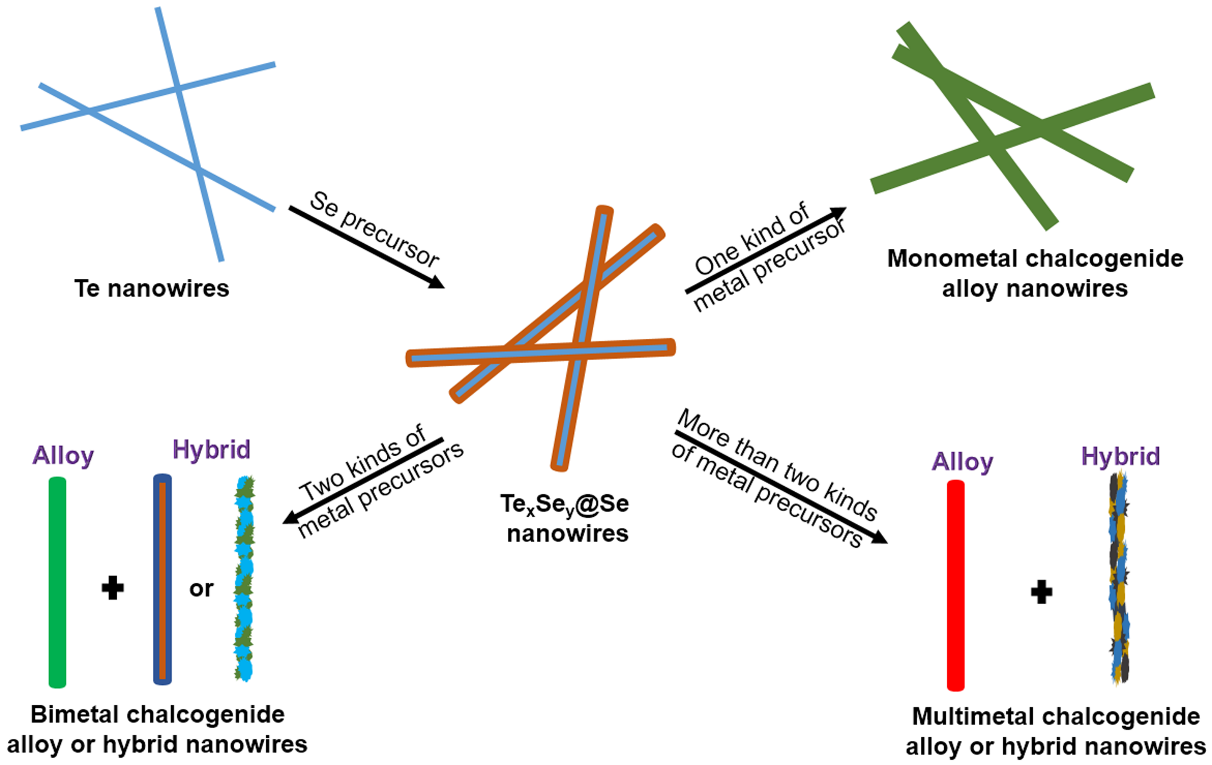Nanostructured metal chalcogenides are highly promising materials for a range of technological applications, including electronic devices, photovoltaic devices, thermoelectric devices and catalysts, owing to their interesting electrical, optical, and electrochemical properties. Particularly, one-dimensional metal chalcogenide nanostructures have been the subject of intensive research because of their unique properties, for example, reduced thermal conductivity and enhanced light absorption, compared to the properties of their corresponding bulk materials. As an efficient, convenient and popular synthetic approach, in the past decades, template-directed method is widely used in synthesis of one-dimensional nanostructures, such as metal selenide and telluride nanowires. However, there are few success on template-directed synthesis of alloyed/multimetal chalcogenide nanowires because of the lack of appropriate template. A team led by Prof.Shu-Hong Yu at the Hefei National Laboratory for Physical Sciences at the Microscale (HFNL) and Department of Chemistry, University of Science and Technology of China (USTC) has designed an excellent template to solve this problem, namely, TexSey@Se core-shell nanowires. Based on this template, they first established a general and controllable strategy for the synthesis of a brand-new generation of one-dimensional metal chalcogenide alloy and hybrid nanostructures with controllable compositions and multiple functionalities, which are inherited from such TexSey@Se core-shell nanowires based on a chemical transformation process (Science Advances 2015, 1, e1500714).

Schematic drawing of the synthetic method toward alloyed/multimetal chalcogenides./Provided by YU Shuhong.
The researchers firstly successfully prepared TexSey@Se core-shell nanowire with tunable Te/Se ratio by simply epitaxially growing Se shells on ultrathin Te nanowires. They realized that this nanowire could serve as an excellent template for synthesis of metal chalcogenide nanowire because of its high chemical reactivity and good dispersity in water. Hence, a general chemical transformation process was developed for the synthesis of more than 45 kinds of one-dimensional alloyed/hybrid metal chalcogenide nanostructures inherited from mother template TexSey@Se core-shell nanowires with tunable compositions. As many as nine types of monometal chalcogenide alloy nanowires (including AgSeTe, HgSeTe, CuSeTe, BiSeTe, PbSeTe, CdSeTe, SbSeTe, NiSeTe, and CoSeTe) can be synthesized. Alloyed and hybrid nanowires integrated with two or more alloyed metal chalcogenide phases could also be prepared. The compositions of all of these metal chalcogenide nanowires were tunable within a wide range. This protocol provides a new general route for the controllable synthesis of a new generation of one-dimensional metal chalcogenide nanostructures, which are expected to find broad applications in many fields.